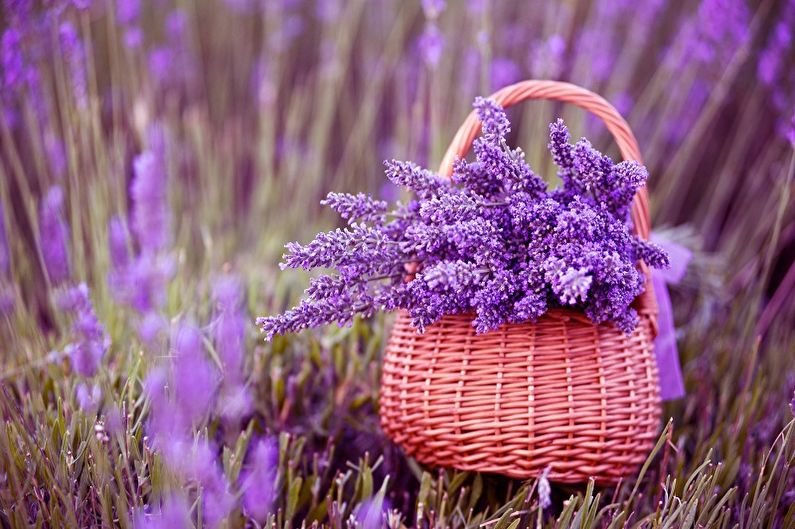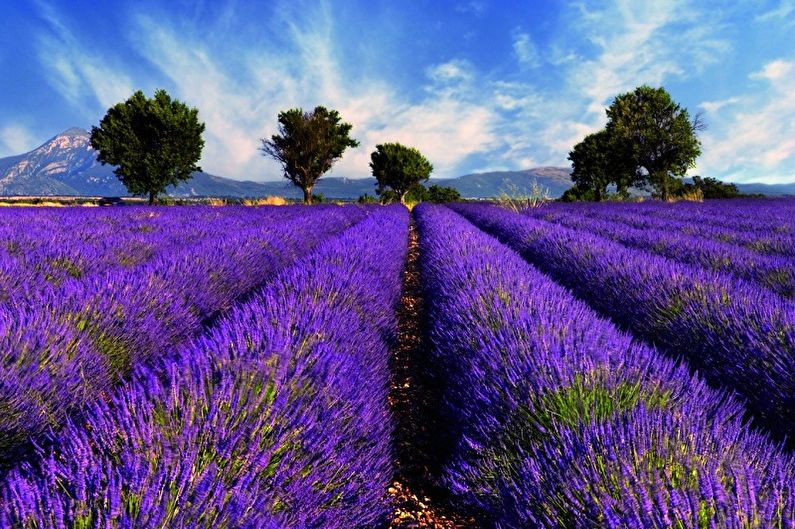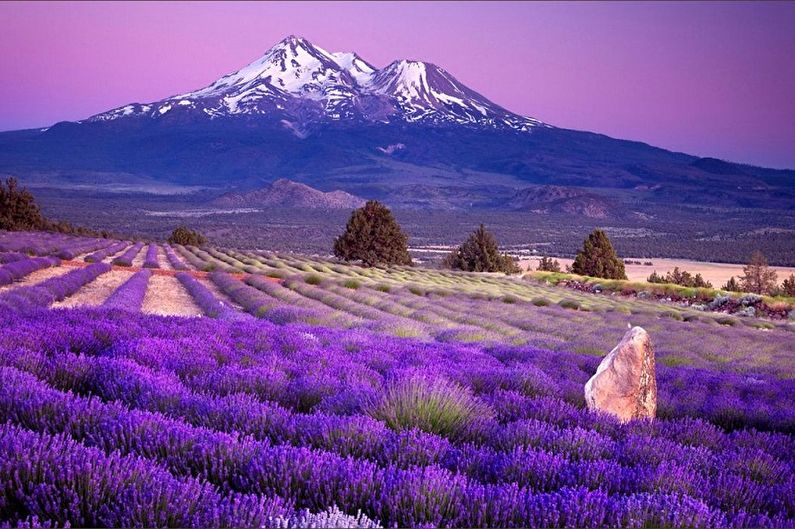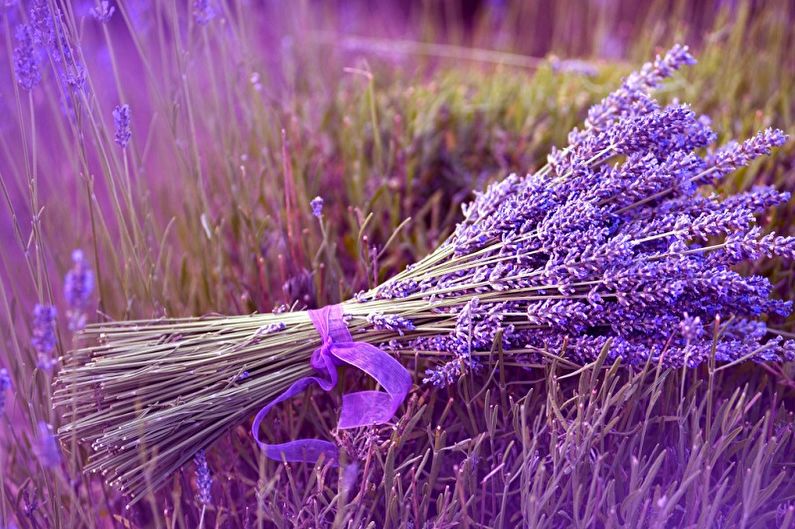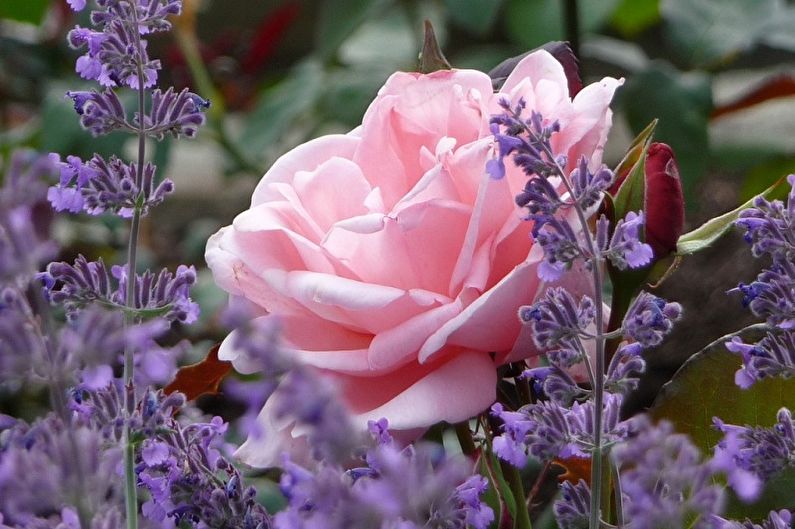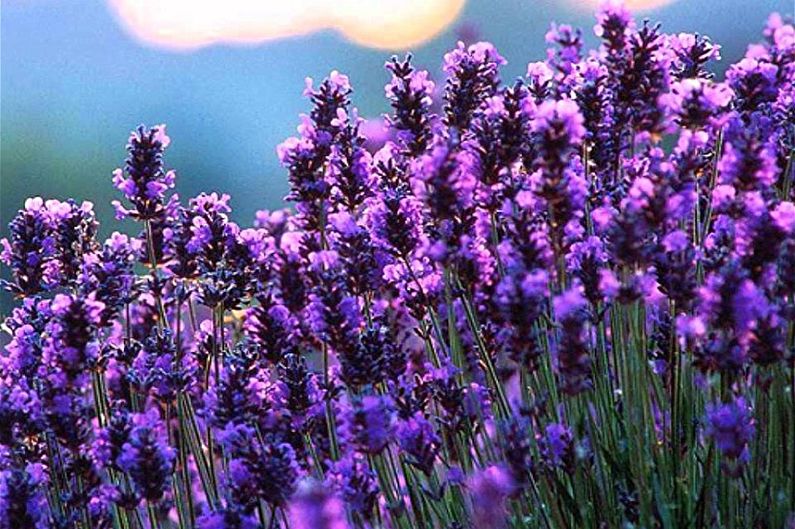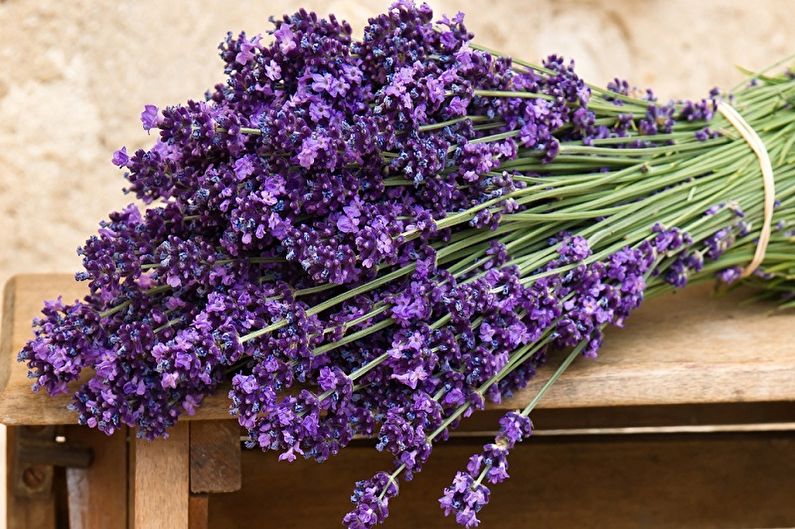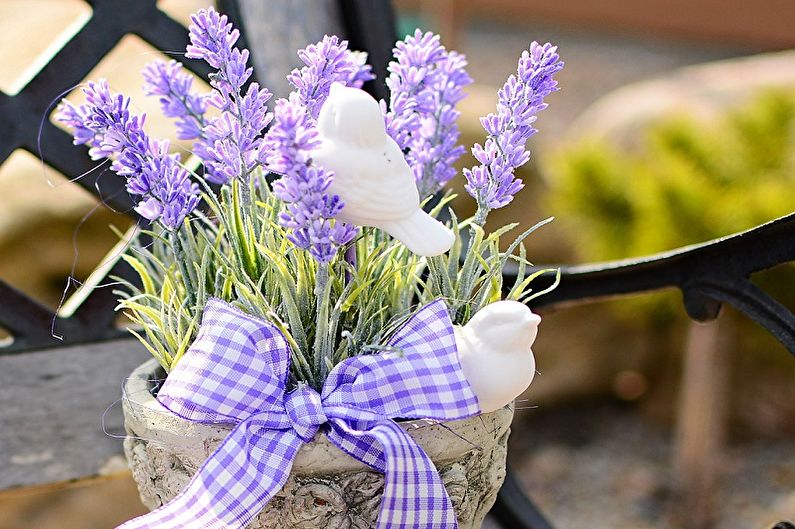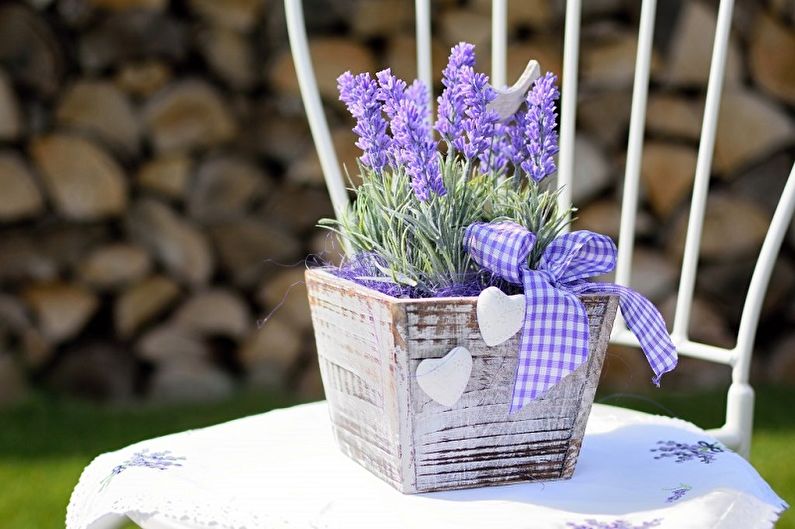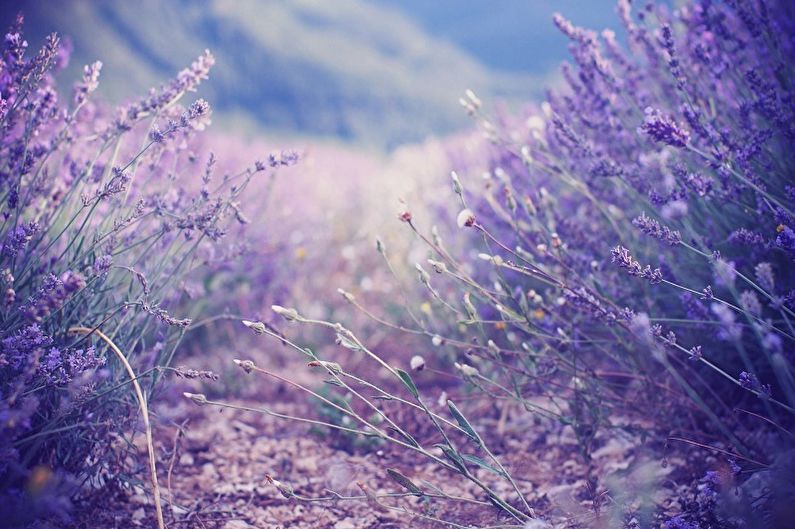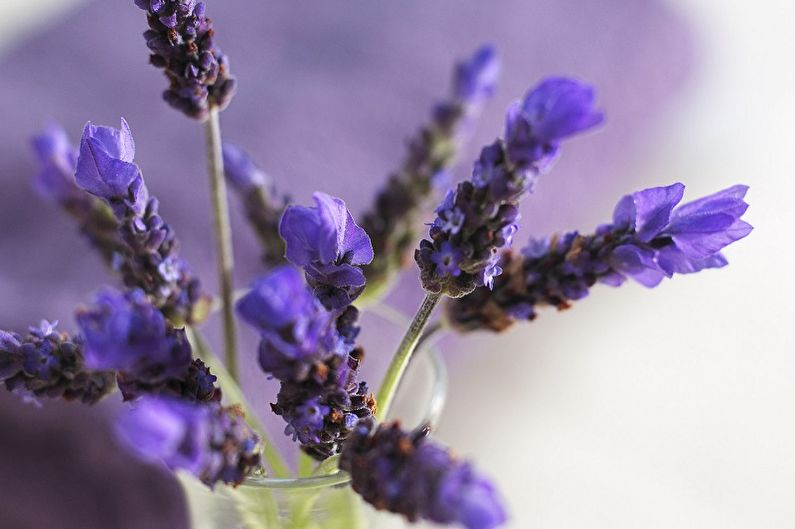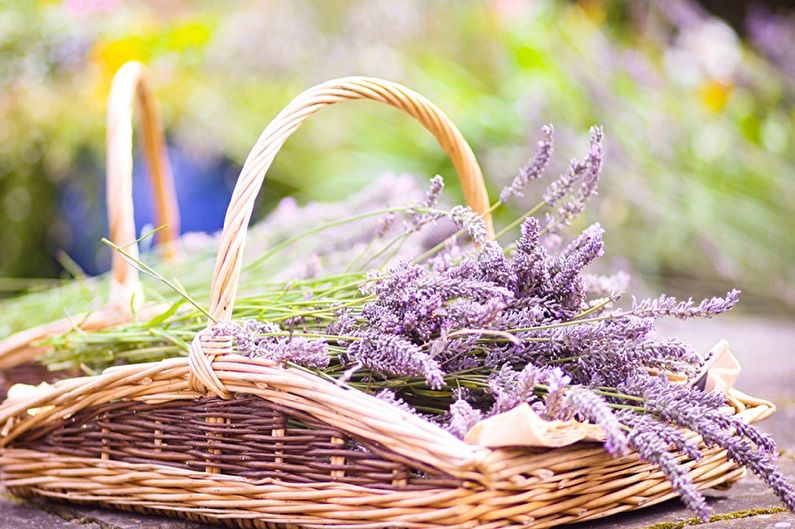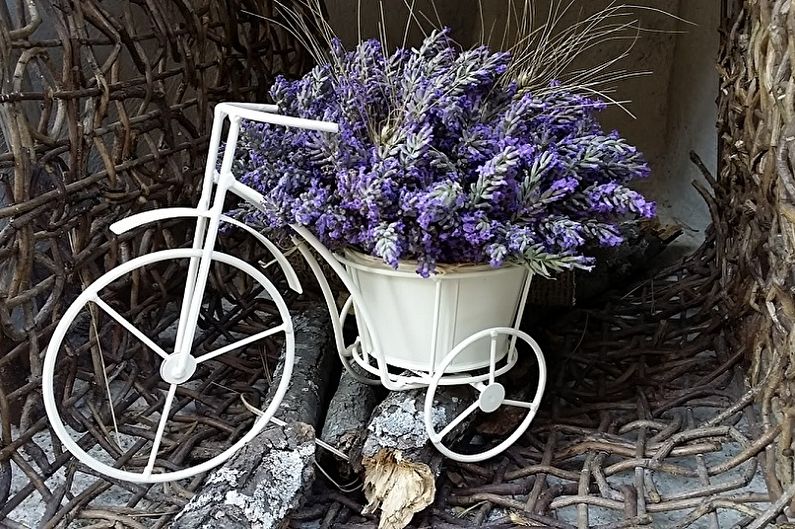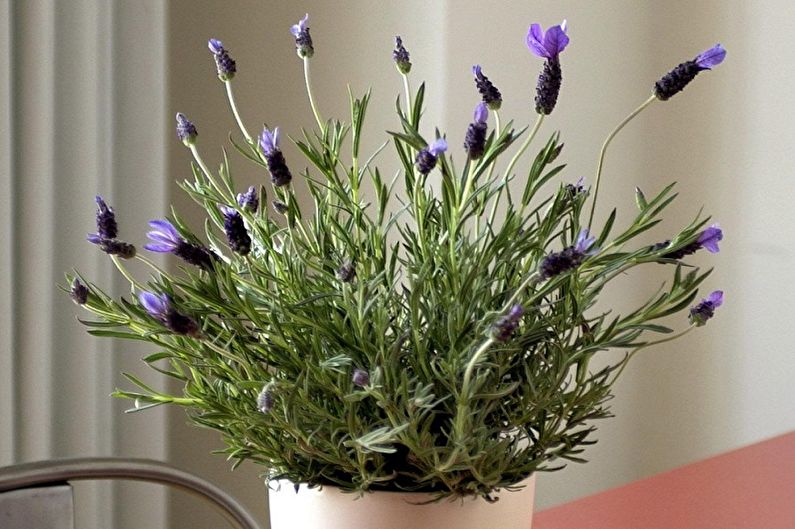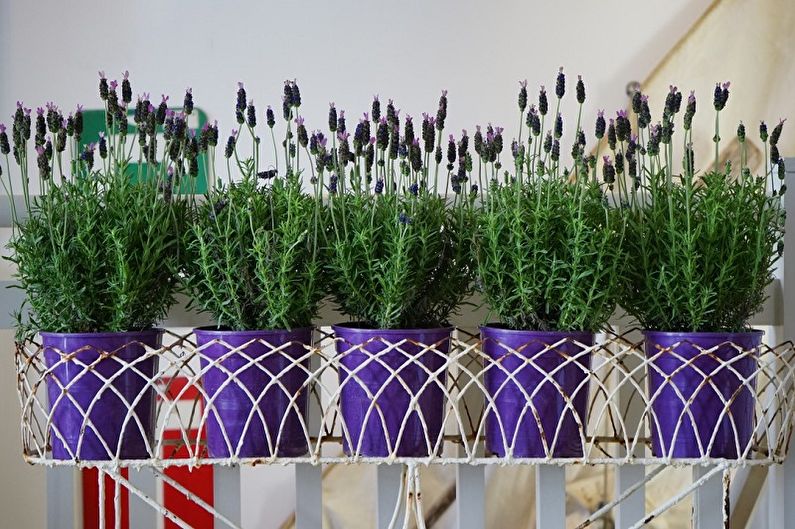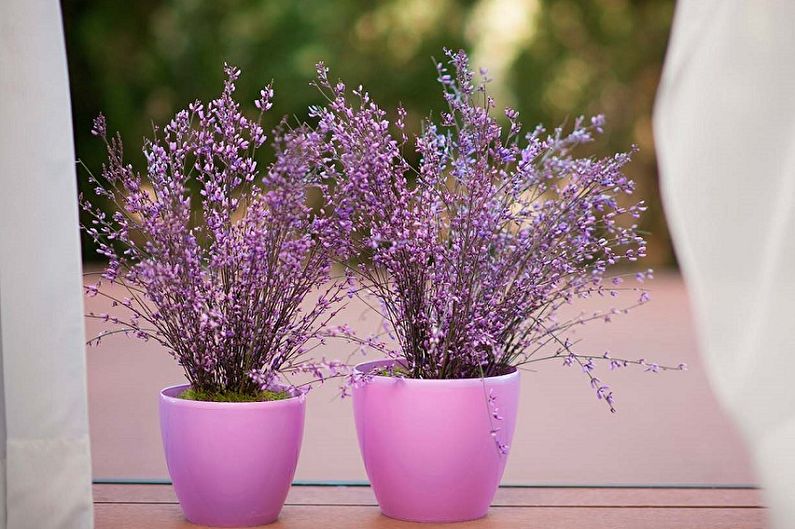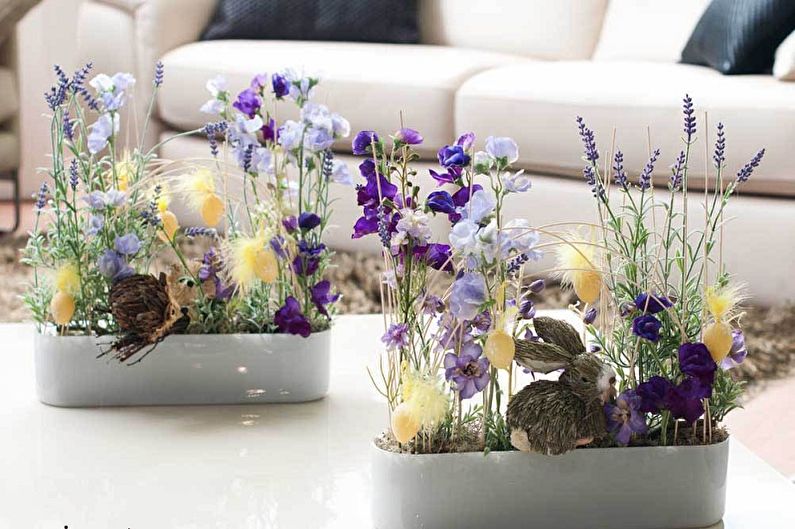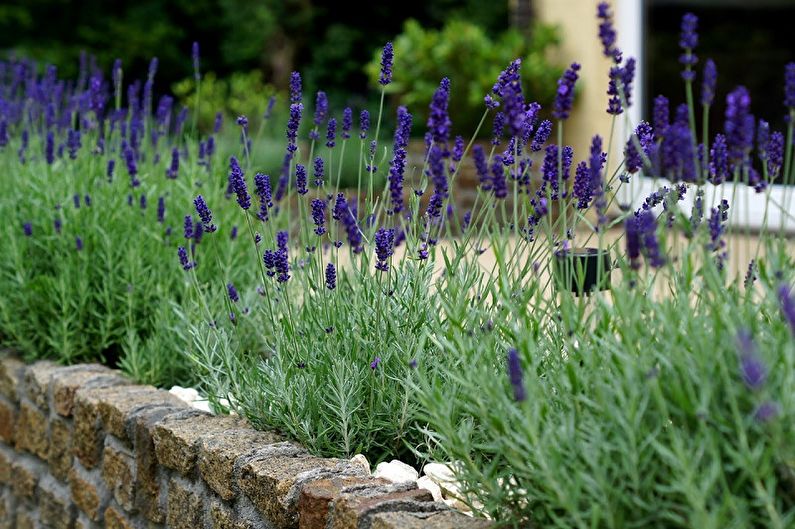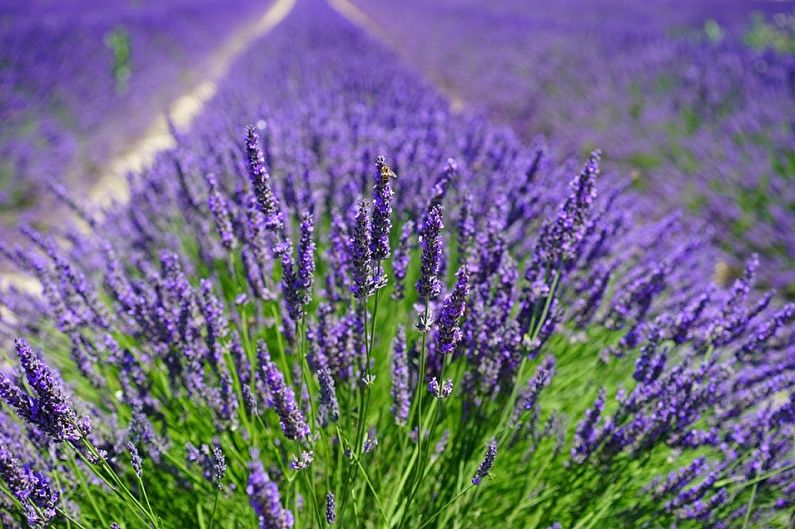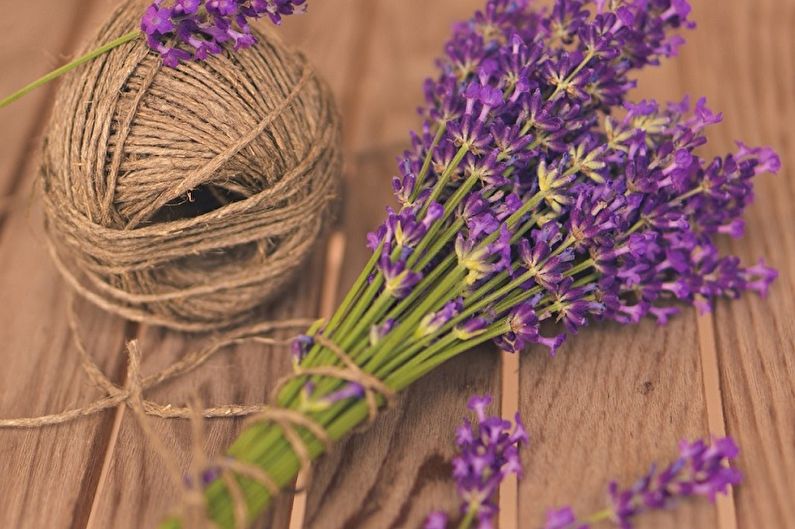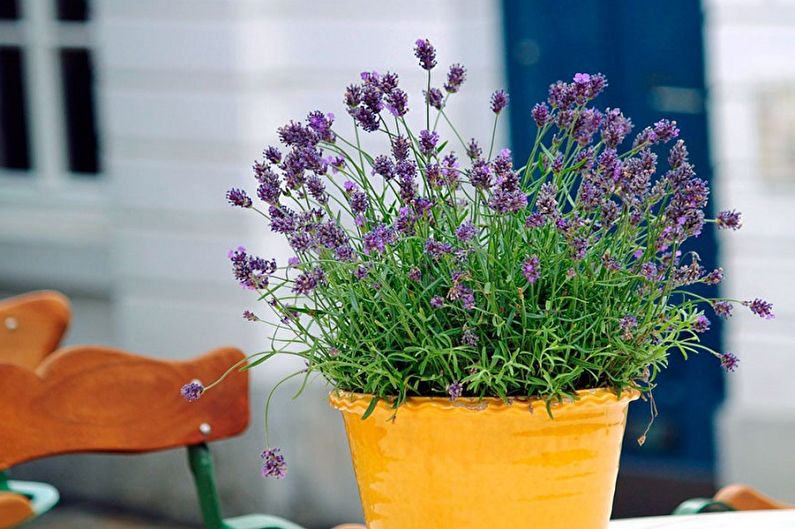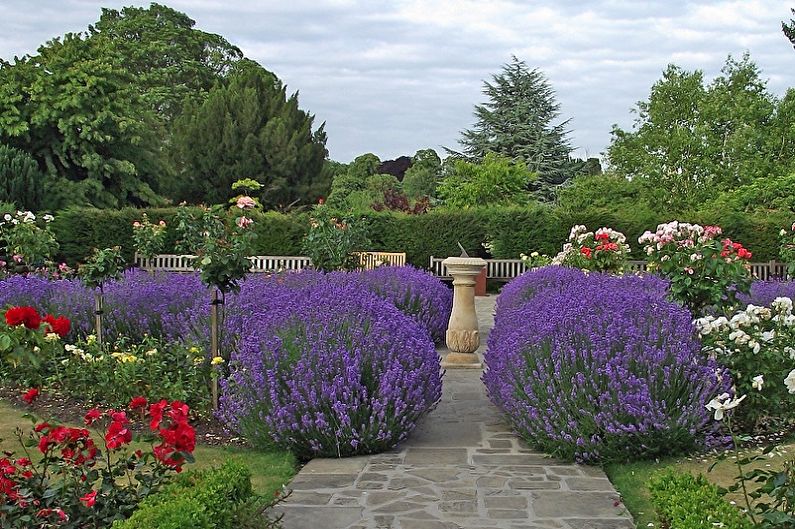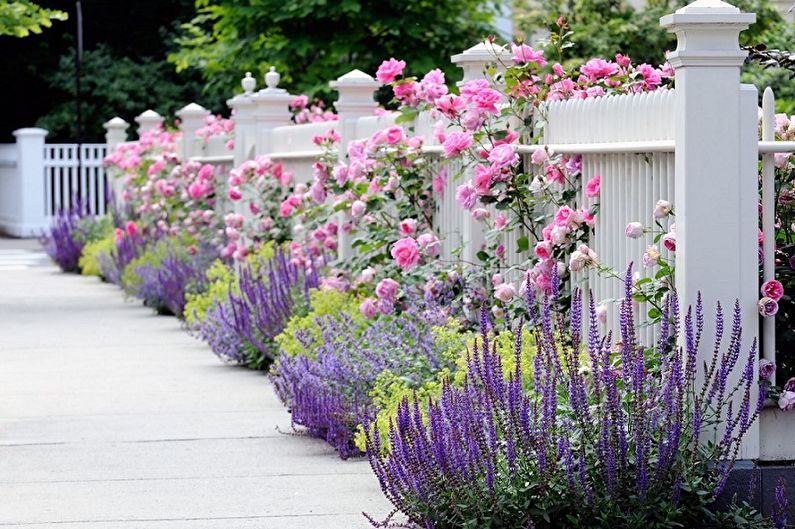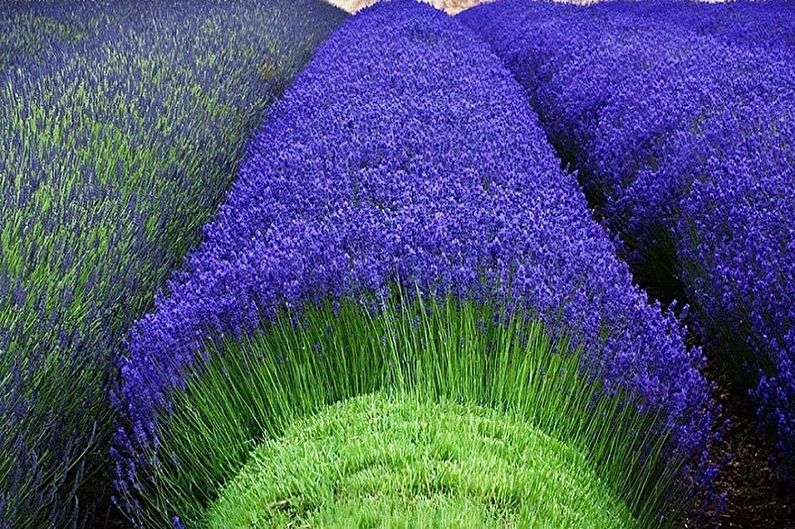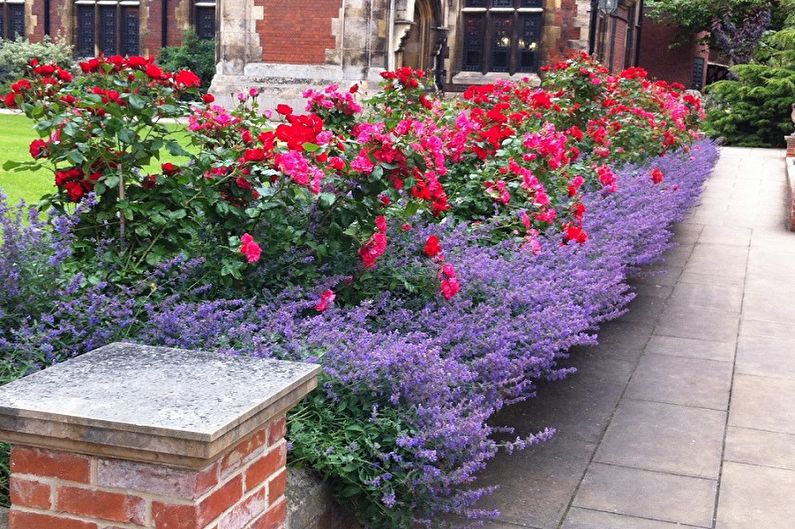
Lavender is one of the favorite plants of flower growers. Its fluffy bushes, full of a diverse palette of colors, are able to transform any house territory, as well as decorate the interior design. In addition to the fact that the culture is perfect for landscape gardening, it is worth noting its other qualities. For more than a thousand years, the plant is considered a cure for various diseases. Due to the richness of the aroma, lavender is widely used in perfumery, as well as for the manufacture of shampoos, soaps, creams and other products.
The main types
To date, science knows about 47 species of this beautiful fragrant plant, which grows in its original form in northeast Africa, India, southern Europe. Cultivation of cultivated species and varieties of lavender is common around the world. Four species are especially popular: English, French, hybrid and gear.
English lavender
This species has narrow leaves and elongated inflorescences, spikelets, so the second name is "narrow-leaved". The plant tolerates low temperatures and can winter easily, without needing to be dug. For the first time, statements about him are found in books on medicine of the 13th century, which describe the excellent medicinal effect of lavender essential oil.
For centuries, culture was grown in the territories of monasteries and principalities as healing. In addition, it has a rather exquisite aroma, which is why it is now widely used in perfumes for the production of expensive perfumes, colognes, soaps. Flowering with pale blue or lilac buds begins in July and continues until the beginning of autumn. Popular varieties: Munsted, Alba, Delphinidae, etc.
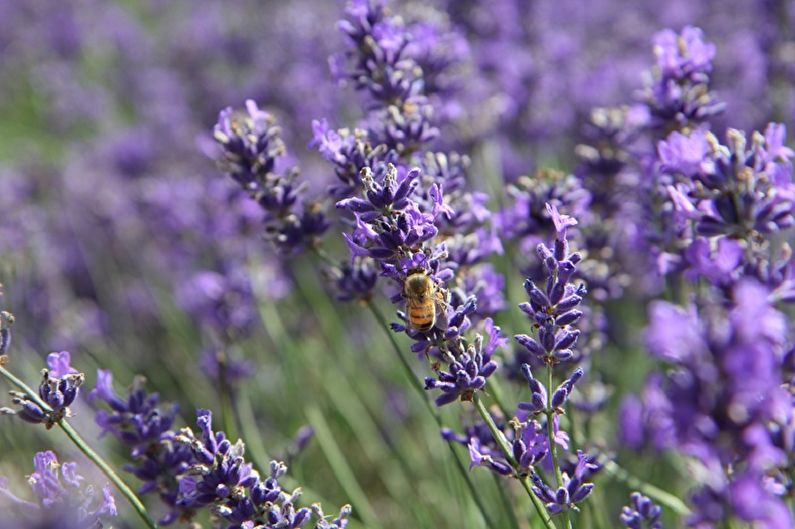
French lavender
Unlike the previous species, French lavender is more moody and demanding in care. In appearance, its main difference is wider leaves, giving the culture the name "broad-leaved". Most often it is used for growing in pots, as minor frosts can easily destroy the crop. Back in the Middle Ages, this species was grown in the southern territories of France to get essential oils, which were later used in medicine and perfumery.
The flowers of the plant have a rich palette - from white, pink to purple and burgundy. Flowering begins much earlier than in other species, around mid-spring, and lasts until July. With proper care, the buds can bloom repeatedly at the end of summer. Popular varieties: Tiara, Rocky Road, Helmsdale.
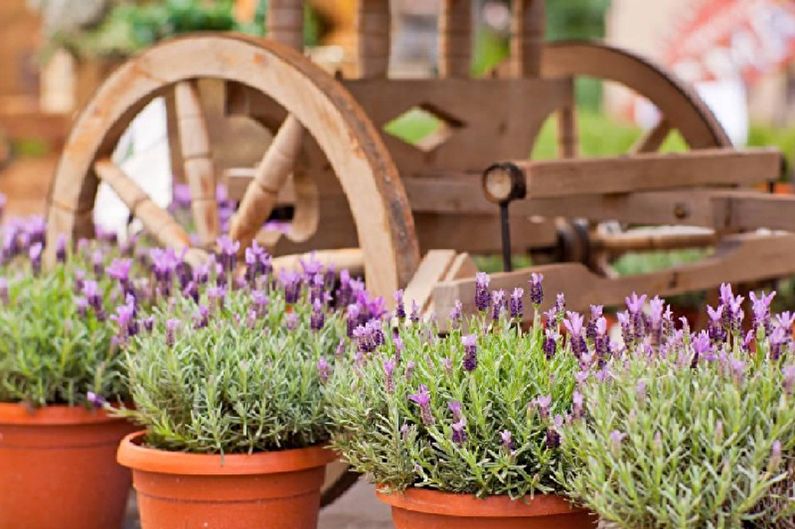
Hybrid lavender
The second name of the species is Dutch. Lavender is grown on an industrial scale. It has quite impressive dimensions, which can sometimes reach two meters in height. Flowering begins in July, while the range of shades of buds is completely diverse in different varieties. For example, lavender "Richard Gray" has dark purple buds, "Grosso" - purple, and "Alba" - snow-white.

Jagged lavender
A plant of this species does not tolerate a drop in temperature, so it can only be grown in a warm climate. This decorative variety is well suited for indoor use. A small bush has a silvery patterned foliage, blooms with excellent flowers of various shades of purple.
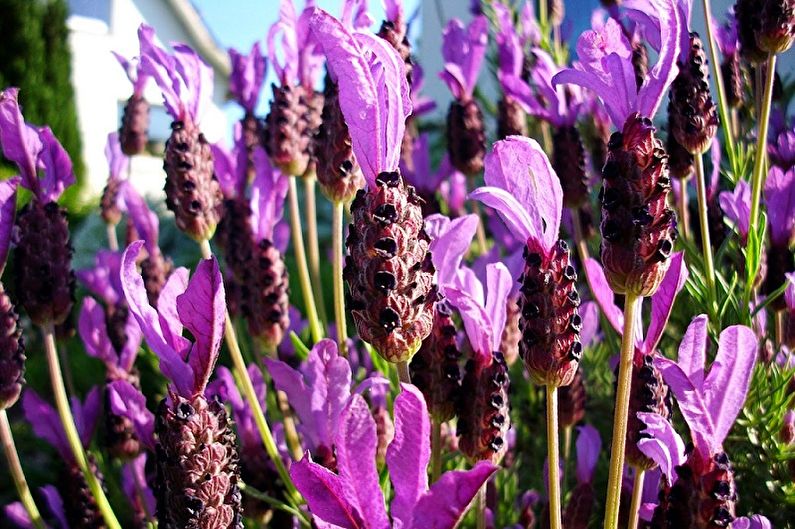
Proper Lavender Care
For the most part, various types of lavender are not demanding on special conditions - they are completely independent and can grow without human intervention.However, in order for the plant to please the most magnificent, long flowering and incomparable aroma, you still have to take care of it.
Lighting
Lavender is a photophilous plant. The most favorable daylight hours for her are 8–10 hours. Indoor instances are best displayed on the balcony from spring to early autumn. When planting crops on a personal plot, it is necessary to choose open, unshaded plots.

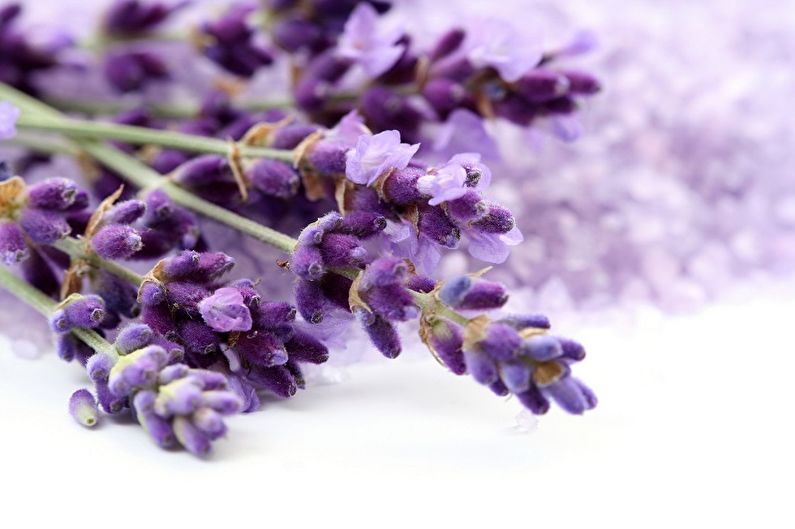
Temperature
Most species withstand heat and cold, so they can winter in the open ground. The exception is varieties of French broadleaf lavender - it is better to transplant its bushes for winter in indoor pots. When grown indoors, the optimum temperature range is + 16 ... + 20C.
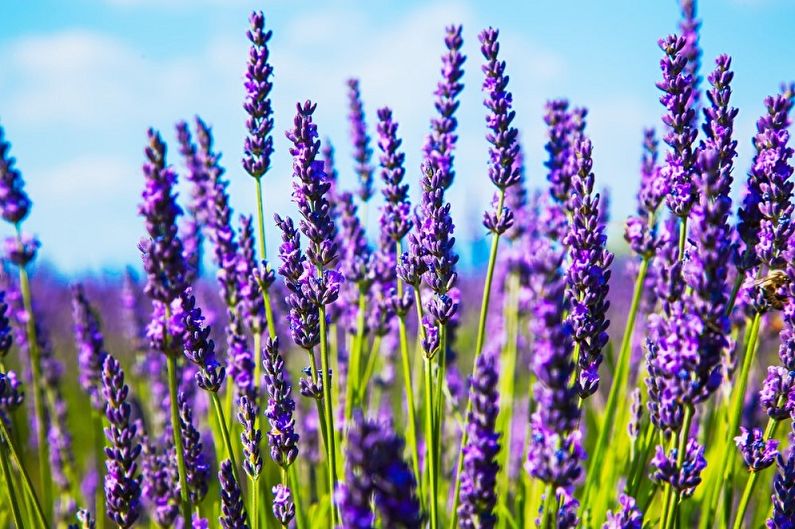
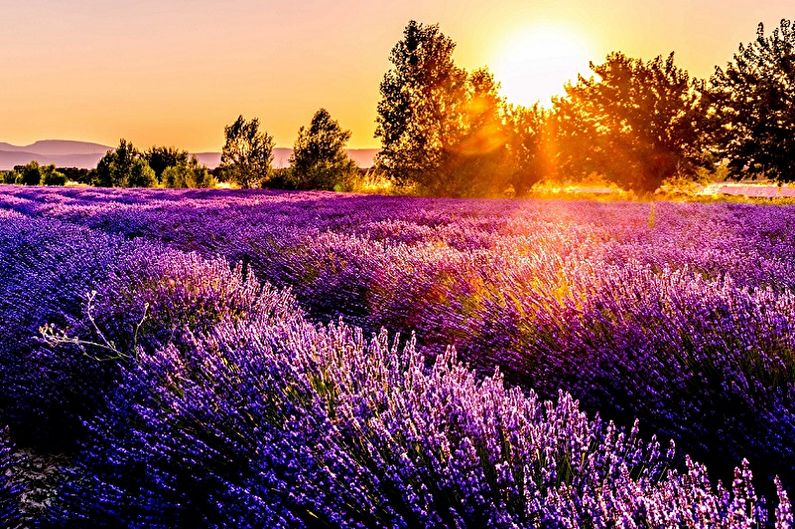
Humidity
Dry air at home will create an unfavorable atmosphere for the plant, especially in the winter, when the heating season begins. If the flowerpot is located near heating appliances, next to it, you must install a container with water and pebbles. Under natural conditions, atmospheric humidity is enough for lavender. In order to protect the roots from fungal diseases, when planting a plant in the soil or a pot, it is necessary to organize drainage from fine gravel, shards or nutshells.
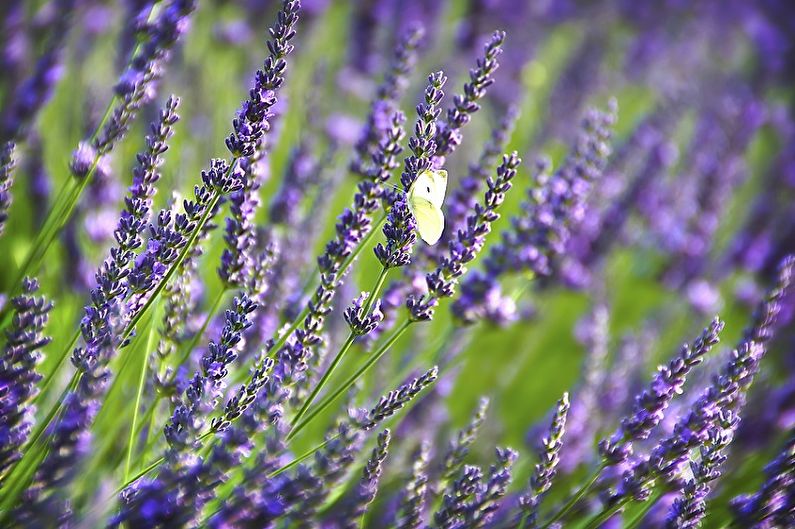
Watering
Sticking to regular watering is very important for lavender. In the warm season, the frequency of drinking for a plant is 2-3 times a week (from May to September). With the onset of cooling, watering should be reduced to 1 time per week. In this case, it is better to use soft defended water. It is worth noting that the culture tolerates drought much easier than an excess of moisture, causing rotting of the root system.
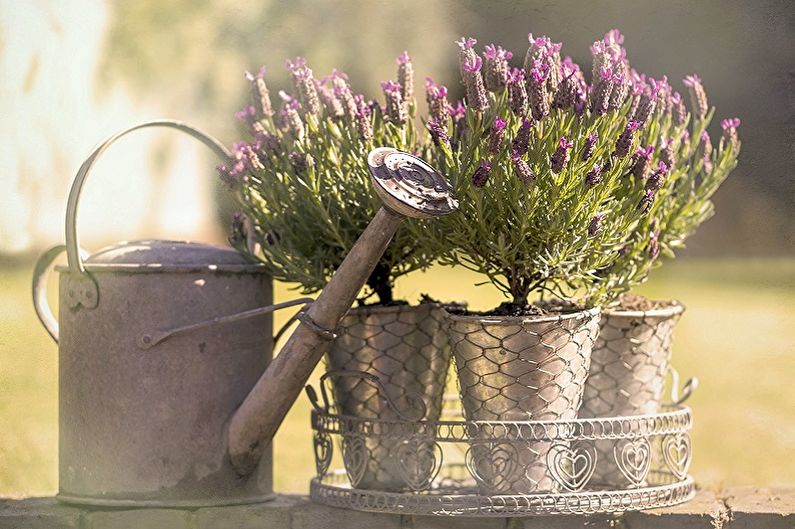
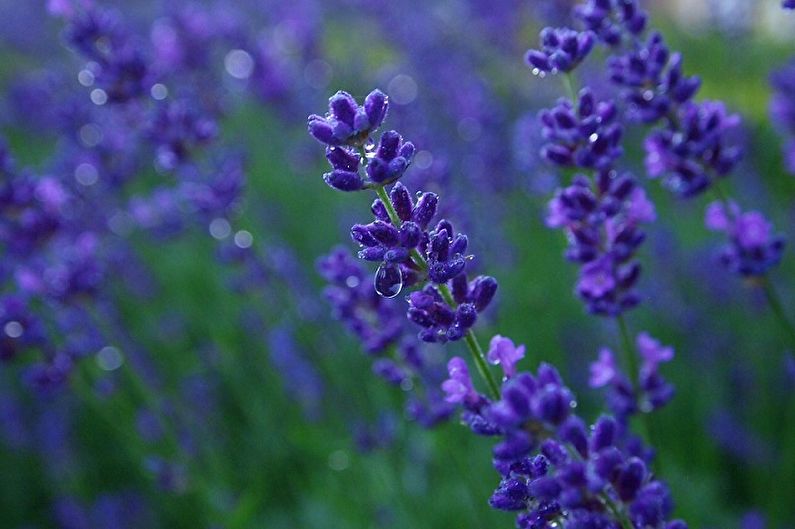
Fertilizers and fertilizing
The first year of life after planting, if fertilizers were applied to the soil, lavender does not need additional fertilizing. Then it should be fertilized in the spring and at the beginning of flowering. In the spring, nitrogen-containing compounds are added to the soil, for example, a urea solution (1 tbsp. / 1 l of water). For one bush you need about 5 liters. such recharge.
Organic additives are appropriate during budding. You can purchase ready-made solutions in the store or make them yourself by mixing liquid mullein with water (0.5 l mullein per 10 l of water).
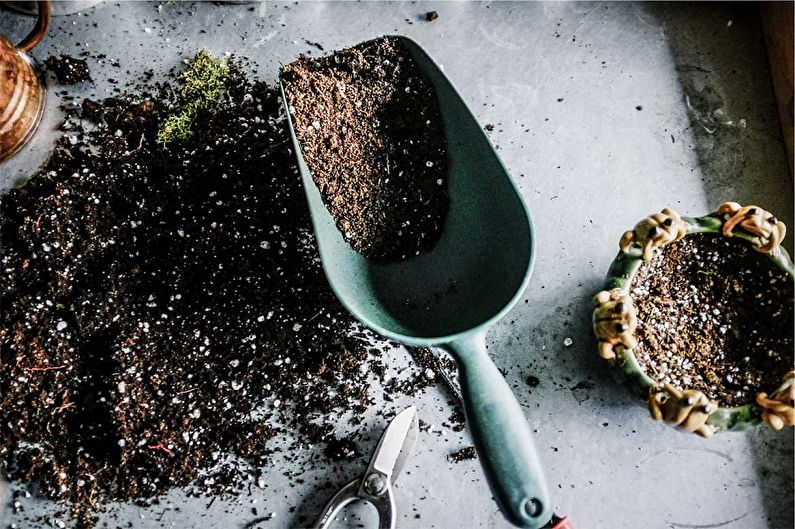
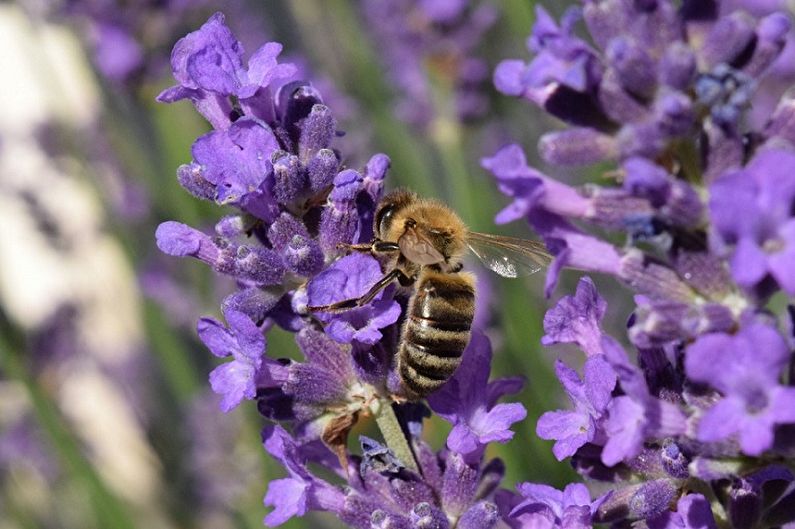
Diseases and Pests
Like any garden or houseplant, lavender is susceptible to certain diseases that may result from improper care or a viral infection. The most difficult is “gray rot”, as a result of which the bush may die if the affected areas are not cut in time.
Silvery leaves and exquisite inflorescences often become a treat for small pests that feed on the plant's juice. The most dangerous are the following representatives:
- Spider mite. Signs of his presence can be determined by dusty coating on the back of the leaf (as their colonies look) and a thin cobweb;
- The cicada and its larvae secreting a liquid that corrodes the stem. The bush begins to fade at the sites of damage and may die.
In the fight against pests, spraying with a soap solution, the use of insecticides effectively helps. Sometimes predatory ticks are specially launched into mass plantings, which destroy the weaker ones - spider mites.
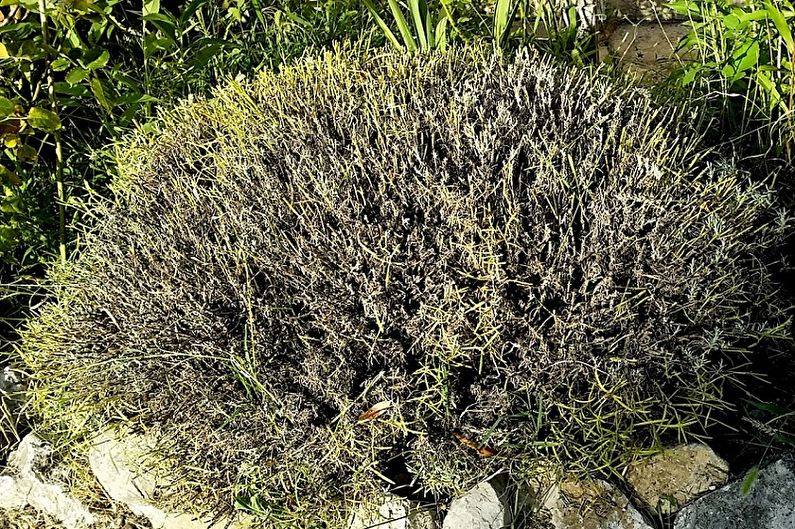
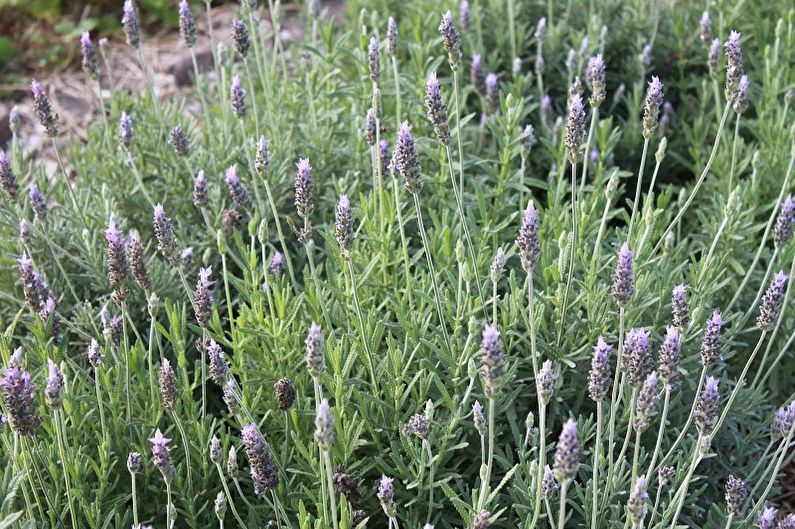
How to transplant lavender
A transplant should be carried out if necessary - do not get carried away by changing the location of the plant, since it is difficult to adapt. For planting, you need to choose a sunny, well-lit area with light soil. Organic and mineral fertilizers, as well as a drainage layer, must be added to the prepared spacious pit, with a diameter of about 40 cm. After planting the bush, it is necessary to water and mulch the soil so that the first time it retains moisture quite well.
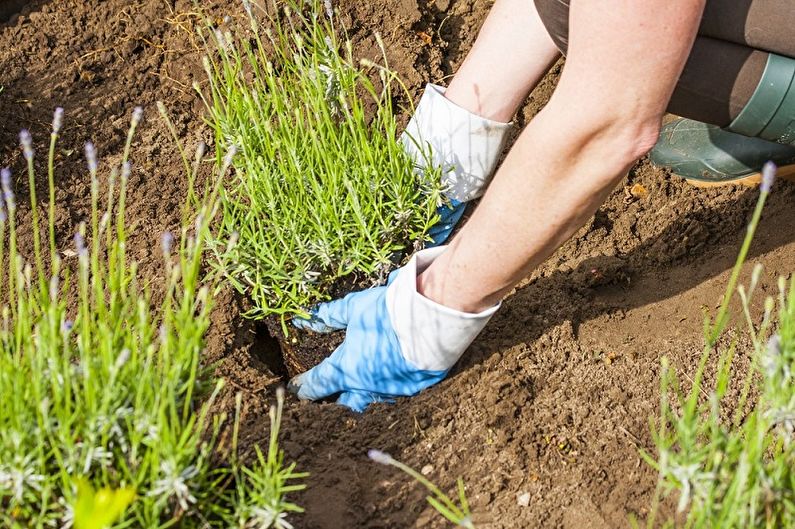
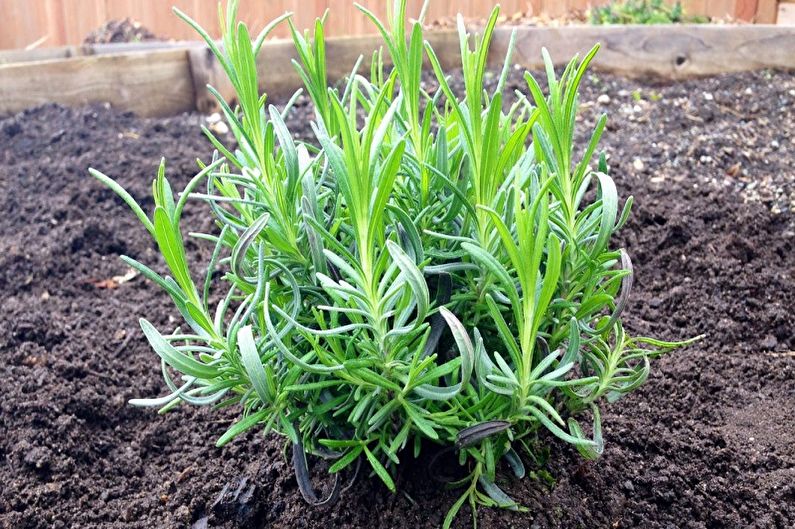
Propagation at home
There are several ways to propagate your favorite species - seeds, cuttings, layering and dividing the bush. The latter option is the most risky, since the plant is quite fragile and can suffer during inaccurate separation. But, given the fact that the bushes grow very quickly, sometimes dividing acts as a necessary measure.
Propagation of lavender seeds
Seeds can be purchased or collected on their own - they retain viability for quite a long time (up to 5 years). Before planting, the material must be subjected to cold stratification for at least 1.5 months. Sowing can be carried out directly into the soil closer to winter - the seeds are dug shallowly, and the soil is mulched.
For planting seedlings at home, the best period would be the end of winter - the beginning of spring. It is necessary to prepare a shallow container, fill it with a universal soil mixture for indoor plants. Seeds are rarely distributed, at a distance of 2 cm, since long roots primarily develop. From above it is necessary to sprinkle the bed with soil, water it. The container is covered with a film or glass. Every day the soil must be sprayed. When the first true leaves appear, the plant can be dived.
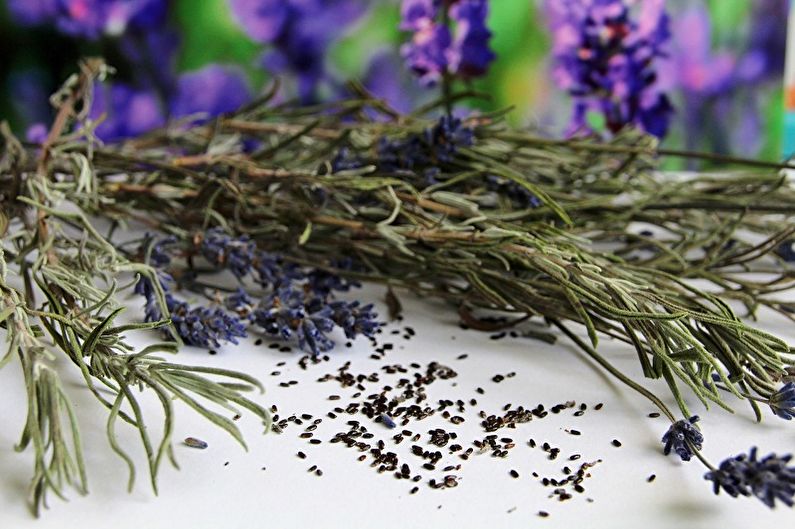
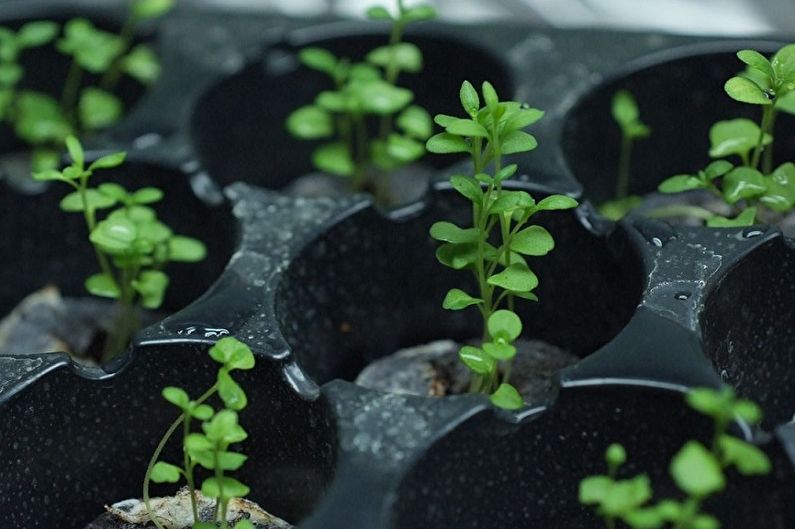
Propagation of lavender by cuttings
The fastest way is considered to be cuttings by young green shoots. The procedure is performed in the spring-summer period (no later than the end of July). It is necessary to select a young branch on the bush with two growth knots and cut a stalk 12–13 cm long with a sharp knife. All leaves except the top are also removed. Next, you should treat the cut site with a root stimulant, which can be purchased at the store. Landing is done in a small container with prepared soil, which should include organic compost and perlite.
After landing, abundant watering is required, the frequency of which decreases over time. The rooting period lasts 4-5 weeks, after which the plant can be transplanted into a large container.
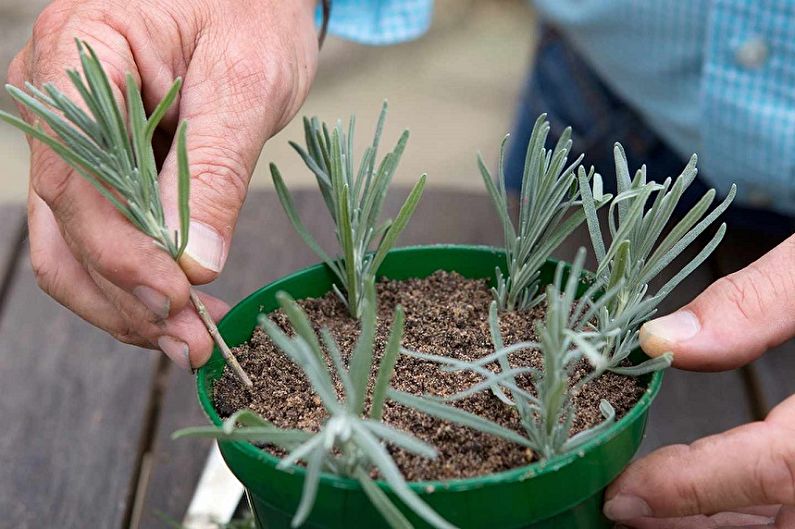
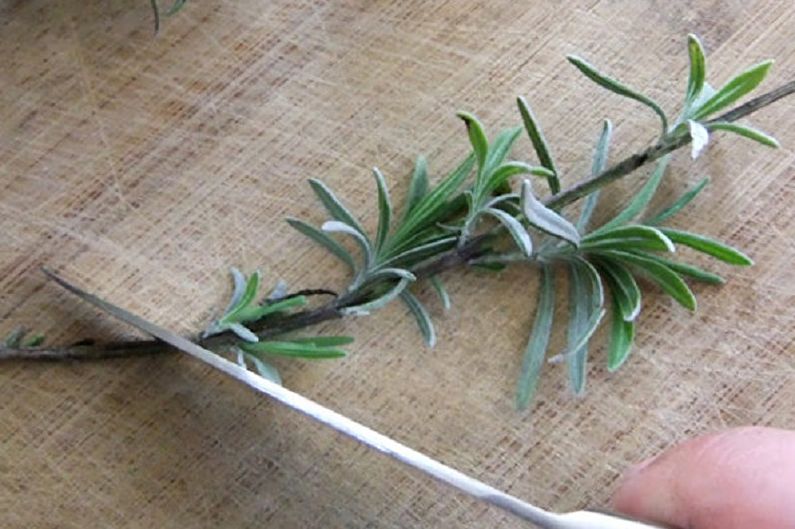
Lavender propagation by layering
It will take longer to grow new bushes by layering - the period of formation of new root systems can last about 3 months. It is necessary to select the lower branch of the bush and place its middle section in a small dug hole (about 10 cm). In this case, the flowering or leafy end should be on the surface. The branch must be fixed with a stone or a bracket and fill up the hole. The recess should be regularly watered. A few months later, a new bush can be separated from the mother and transplanted.
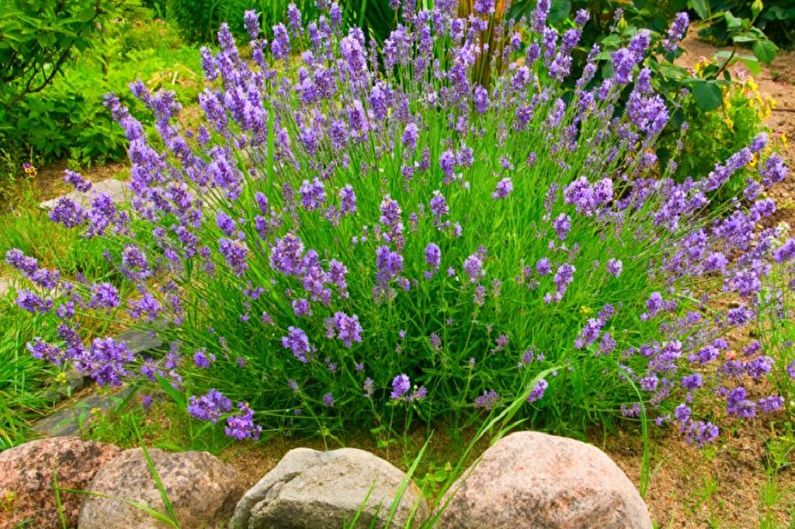
Reproduction of lavender by division
As mentioned earlier, lavender is quite difficult to tolerate division, so this method is appropriate in extreme cases. The department is held in early spring. Each plot should contain at least 3-5 live stems and a corresponding proportion of roots. For planting, holes are dug up to 30 cm in depth, the bottom of which is equipped with nutritious top dressing, compost, pine bark. After immersing the bush, it must be sprinkled with soil, slightly tamped and watered.
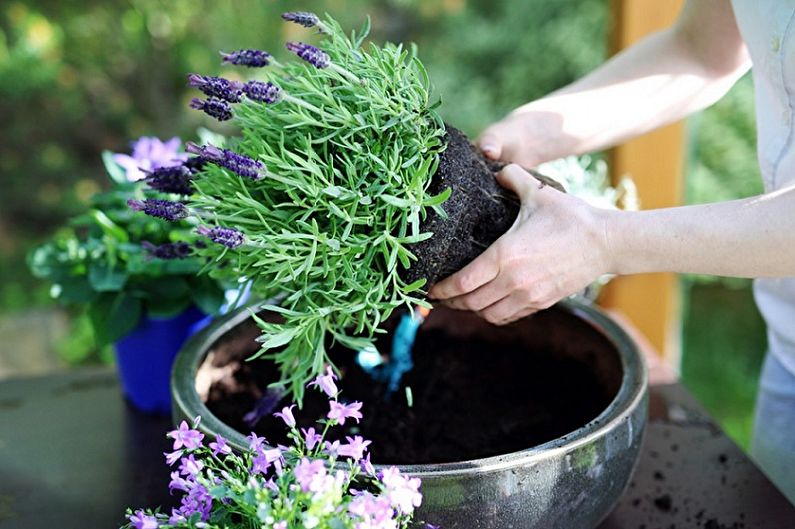
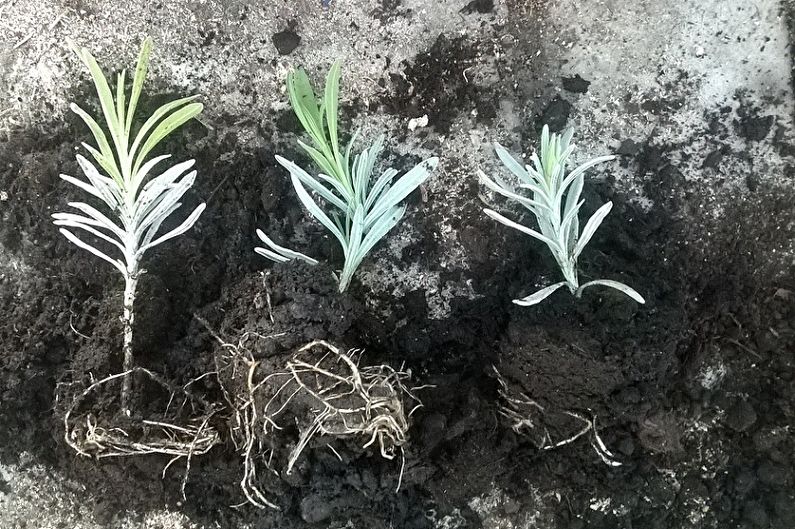
Lavender - photo
Lavender is a stunningly beautiful plant that looks equally attractive both in indoor potted compositions and on a personal plot. It is used to create hedges, mixborders, design rockeries and alpine hills. In our photo gallery you can familiarize yourself with the variety of species of this culture, its luxurious flowering, as well as ways to decorate home gardens. Enjoy watching!
